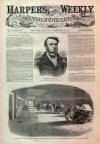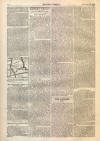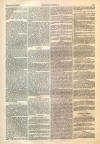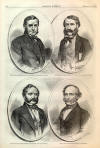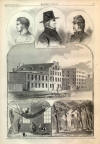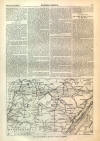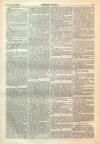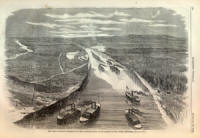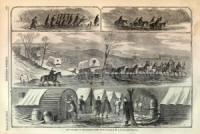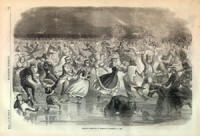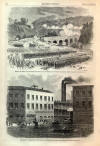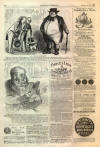Battle of Fort Henry
|
|
This Site:
|
VOL. VI.—No. 269.] NEW YORK, SATURDAY, FEBRUARY 22, 1862. SINGLE COPIES SIX CENTS. $2 50 PER YEAR IN ADVANCE. Entered according to Act of Congress, in the Year 1862, by Harper & Brothers, in the Clerk's Office of the District Court for the Southern District of New York. COMMODORE FOOTE, U.S.N.[FROM A PHOTOGRAPH FURNISHED BY MR. E. ANTHONY.]THE CAPTURE OF FORT HENRY.WE illustrate very fully in this number the capture of FORT HENRY, Tennessee, which took place on 6th inst. On this page we give a portrait of COMMODORE FOOTE, and a picture, from a sketch by our correspondent, Mr. Alexander Simplot, of the GUN-DECK OF ONE OF THE MISSISSIPPI GUN-BOATS ; on page 120 we give a view of the GUN-BOATS STEAMING UP TO THE ATTACK; and on page 119 a MAP showing the position of Fort HENRY, and its geographical relations to Columbus, Bowling Green, and other strategical points. - We take from the Cincinnati Gazette the following account of the action : THE BATTLE.Yesterday (6th), at half past 10 A.M., the gun-boats Cincinnati, St. Louis, Carondelet, and Essex, the Tyler, Conestoga, and Lexington bringing up the rear, advanced boldly against the rebel works, going to the right of Panther Creek Island, immediately above, where, on the east shore of the river, stands the fortification, and keeping out of range till at the head of the island, and within a mile of the enemy, passing the island in full view of the rebel guns. We steadily advanced, every man at quarters, every ear strained to catch the flag-officer's signal-gun for the commencement of the action. Our line of battle was on the left of the St. Louis, next the Carondelet, next the Cincinnati (for the time being the flag-ship, having on board Flag-officer Foote), and the next the Essex. We advanced in line, the Cincinnati a boat's length ahead, when, at half past 11, the Cincinnati opened the ball, and immediately the three accompanying boats followed suit. The enemy was not backward, and gave an admirable response, and the fight raged furiously for half an hour. We steadily advanced, receiving and retuning the storms of shot and shell, when, getting within three hundred yards of the enemy's works, we came to a stand and poured into him right and left. In the mean time the Essex had been disabled, and drifted away from the scene of action, leaving the Cincinnati, Carondelet, and St. Louis alone engaged. At precisely forty minutes past one o'clock the enemy struck his colors, and each cheering, such wild excitement as seized the throats, arms, or caps of the four or five hundred sailors of the gun-boats, can be imagined. After the surrender, which was made to Flag-officer Foote by General Lloyd Tilghman, who defended his fort in a most determined manner, we found that the rebel infantry, encamped outside the fort, numbering four or five thousand, had cut and run, leaving the rebel artillery company in command of the fort. The fort mounted seventeen guns, most of them thirty-two and thirty-four pounders, one being a magnificent ten-inch Columbiad. Our shots dismounted two of their guns, driving the enemy into the embrasures. One of their rifled thirty-two-pounders burst during the engagement, wounding some of their gunners. The rebels claimed to have but eleven effective guns, worked by fifty-four men—the number, all told, of our prisoners. They lost five killed, and ten badly wounded. The infantry left every thing in their flight. A vast deal of plunder has fallen into our hands, including a large and valuable quantity of ordnance stores. General Tilghman is disheartened. He thinks it one of the most damaging blows of the war. In surrendering to Flag-officer Foote, the rebel General remarked, "I am glad to surrender to so gallant an officer." Flag-officer Foote replied, "You do perfectly right, Sir, in surrendering but you should have blown my boats out of the water before I would have surrendered to you." In the engagement the Cincinnati was in the lead, and, flying the Flag-officer's pennant, was the chief mark. Flag-officer Foote and Captain Stembel crowded her defiantly into the teeth of the enemy's guns. She got thirty-one shots, some of them going completely through her. The Essex was badly crippled when about half through the fight, and crowding steadily against the enemy. A ball went into her side forward port, through her heavy bulkheads, and squarely through one of her boilers, the escaping steam scalding and killing several of the crew. Captain Porter, his aid, C. P. Britton, Jun., and Paymaster Lewis were standing in a direct line of the balls passing, Mr. Britton being in the centre of the group. A shot struck Mr. Britton on the top of his head, scattering his brains in every direction. The escaping steam went into the pilot-house, instantly killing Messrs. Ford and Bride, pilots. Many of the soldiers at the rush of steam jumped overboard and were drowned. The Cincinnati had one killed and six wounded. The Essex had six seamen and two officers killed. seventeen men wounded, and five missing. There were no casualties on the St. Louis or Carondelet, though the shot and shell fell upon them like rain. The St. Louis was commanded by Leonard Paulding, who stood upon the gun-boat and worked the guns to the last. Not a man flinched, and with cheer upon cheer sent the shot and shell among the enemy. FORT HENRY.The Herald says: This fort, the only fortification on the Tennessee River of much importance, is situated near the line of Kentucky and Tennessee, on the east bank of the stream. It stands in the bottom, about the high-water-mark, just below the bend in the river, and at the head of a straight stretch of about two miles. It therefore commands the river for that distance down stream, and very little else. The land around it is a little higher than the fort, and a portion of it is covered with timber. The armament of the fort consists of eight 32-pounders, four 12-pounders, and two 6-pounders. The 32 and 12-pounders are heavy guns, and the 6-pounders light pieces. On the opposite side of the river are three hills, which completely command the fort. Recently some new fortifications were commenced on these hills, where it was intended to mount some very large guns and three rifled cannon. The late rebel garrison was commanded by Brigadier-General Lloyd Tilghman. The troops consisted of the Fourth Mississippi Regiment, Seventh Mississippi Regiment, regiment Louisiana volunteers, First Kentucky volunteers, one regiment rebel cavalry. THE GUN-BOATS.The following description of the gun-boats engaged will be found interesting: The gun-boats St. Louis, Essex, and Cincinnati are about one hundred and seventy-five feet in length, fifty-one feet and a half in breadth, and draw five feet when loaded. The bows and bulwarks consist of about three feet of oak timber, bolted together, and sheathed with the best quality of wrought iron plates two and a half inches thick. The sides have the same sheathing, with less bulk of timber. The St. Louis and Cincinnati are pierced for thirteen guns each, the Essex for nine guns. The bow guns are heavy 84-pound rifled cannon; the others are 6-inch (Next Page) GUN-DECK OF ONE OF THE MISSISSIPPI GUN-BOATS ENGAGED IN THE ATTACK ON FORT HENRY.--[SKETCHED BY MR. ALEXANDER SIMPLOT] 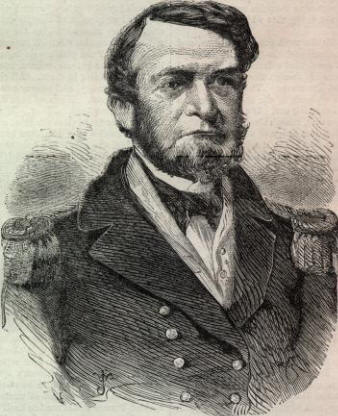 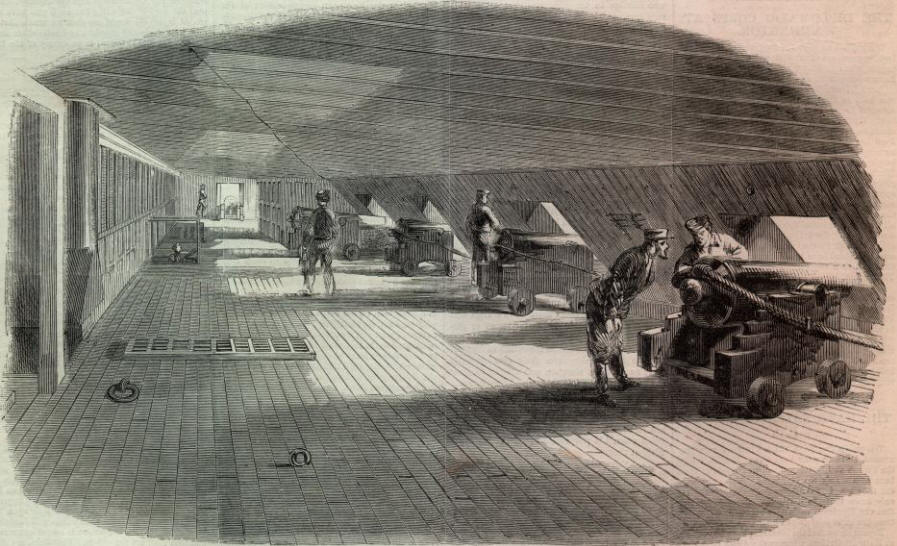 |
||||||||||||||||||||||||||||
|
|
||
|
|
Site Copyright 2003-2018 Son of the South. For Questions or comments about this collection, contact paul@sonofthesouth.net |
|
|
Are you Scared and Confused? Read My Snake Story, a story of hope and encouragement, to help you face your fears. |
||
